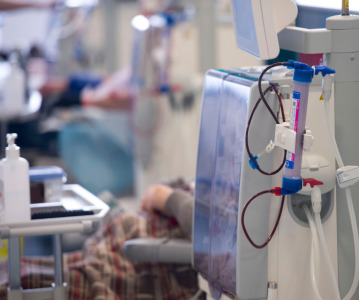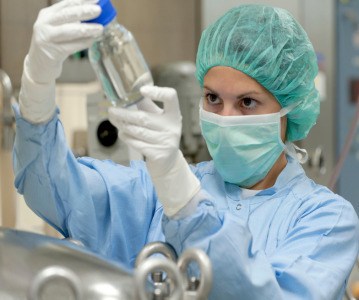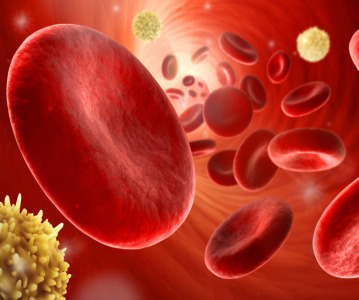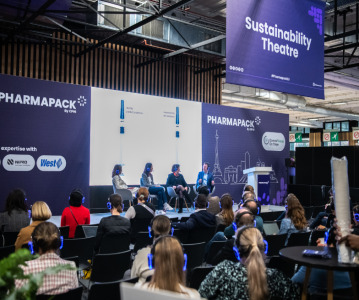Biomanufacturing Trends – Capacity, Capability and Careers

In this month's edition of the CPHI Webinar Series, experts from BioPlan Associates and NIBRT share insights on key trends impacting the biomanufacturing and bioprocessing sector.
Each year, BioPlan Associates releases findings from an annual study in which respondents from almost 300 organisations spanning biopharma, CMOs and suppliers are asked to identify key biomanufacturing trends.
President and Managing Partner of BioPlan Associates, Eric Langer, joined the February edition of the CPHI Webinar Series, Biomanufacturing Trends: Capacity, Capability and Careers, to share insights from the 18th Annual Biomanufacturing Report on major trends in the biomanufacturing and processing space.
Looking at key market trends over the past 8 years, Langer points out that many trend lines are actually decreasing – manufacturing productivity and efficiency for example has reduced from 20.1% to 14.9% in the period 2014-2021. Langer attests that this is due to the industry’s acceptance as productivity and efficiency not as a trend, but as a more generalised expectation.
The same goes for single-use systems, which was considered a huge trend in the past 5-10 years but has now reached such broad adoption that fewer respondents considered this to be a focus area for 2022.

Source: BioPlan Associates
Topping the list for the coming year is the challenge of sourcing raw materials, and delivering on viral and gene therapies, both segments which have been brought into sharp focus as a result of the pandemic.
The impact of COVID-19 on biomanufacturing
Unsurprisingly, COVID-19 has dramatically accelerated some of the previous trends we were seeing in the market. In particular, supply chain concerns and an increased appetite for outsourcing emerged as key impact areas.
Data from the report shows that as a result of COVID-19, 70% of biopharma companies will be looking to outsource more of their portfolio in the year ahead, 60% are looking to make changes in their supply chain infrastructure and 50% are looking to establish a more robust supply chain through regionalization. China and South Korea in particular have seen huge growth in the CDMO market in the past decade, building capacity through the construction of several new manufacturing sites.
Capacity is another challenge brought into focus by COVID-19. With so much emphasis on vaccine production in the past year, and CMOs often being the only facilities capable of production at the required volumes, this has meant that capacity for all manufacturing, not just vaccines, is currently at an all-time low.
Addressing supply chain security issues
To create a more robust supply chain, Langer shares that 76% of the industry will be taking steps to validate additional bioprocessing suppliers to add security to their network.
He believes we can expect to see an influx of new suppliers entering the market in the next 2-5 years, bringing with them increased price competition, and most importantly, innovation. Langer feels these smaller players who may have previously been overlooked, will now be brought into focus.
The chronic talent problem and ‘The Great Retirement’
Also sharing expertise on the webinar is Killian O’Driscoll, Director of Projects at the National Institute of Bioprocessing Research & Training (NIBRT), who are experts in providing highly specialised training solutions to the bioprocessing sector.
Reiterating the severity of the hiring crisis, O’Driscoll affirms that this is a global challenge being driven by an increasingly complex pipeline of innovative therapies across cell and gene, vaccines, biosimilars and orphan drugs, which require advanced manufacturing approaches.
O’Driscoll shares growth examples from Celltrion, who are creating an estimated 110,000 new roles across its pharmaceutical business up to 2030 to support the launch of 20 new products, and Wuxi Biologics, which has also grown from one 5,000 L bioreactor capacity to 270,000 L across twelve global production sites in the course of a decade.
So where are the most significant gaps? The BioPlan Annual Report respondents find that the most challenging positions to fill at their facilities are both upstream and downstream process development staff, highlighting a major concern – if as a facility you are not able to develop your process, it will simply not be possible to produce your product.
According to Langer, 43% of survey respondents will increase hiring budgets in the coming year by at least 10%, to bring in the right operational and scientific staff to support manufacturing activities. Investment in talent ranked second only to budgets for new capital equipment.
You may have heard of The Great Resignation, but Langer cites the challenge of ‘The Great Retirement’ as a particular challenge for biomanufacturing. He shares the example of one organisation who had 20% of their workforce retire during the pandemic, leaving 1 in 5 positions open and creating a situation where significant expertise is lost, creating capacity limiting issues.
Tackling the talent gap
So, what can be done to support the future of bioprocessing and manufacturing? O’Driscoll believes a ‘Reskilling Revolution’ is required. This would involve transitioning ‘at-risk’ workers into new roles through targeted re-skilling, but it’s an initiative which must be undertaken jointly between companies, industry, and governments to achieve maximum effectiveness.
Additionally, the right training and resources are needed to equip the next generation biomanufacturing workforce with the tools to drive the industry forward. NIBRT offers an online academy of training courses, many of which are free to access, for those looking to build knowledge, and runs a series of higher education programmes, customised training sessions and programmes, all centred on biomanufacturing workforce development.
For more information on NIBRT’s training opportunities, visit this link.
To learn more about biomanufacturing trends and the challenges around securing the workforce of the future, you can access the full webinar on-demand here.
Related News
-
News US FDA adds haemodialysis bloodlines to devices shortage list
On March 14, 2025, the US FDA published an open letter to healthcare providers citing continuing supply disruptions of haemodialysis bloodlines, an essential component of dialysis machines. -
News Women in Pharma: Manufacturing personal and team success
Our monthly Women in Pharma series highlights the influential lives and works of impactful women working across the pharmaceutical industry, and how the industry can work towards making the healthcare industry and workplace more equitable and inclusive... -
News Pfizer may shift production back to US under Trump pharma tariffs
At the 45th TD Cowen annual healthcare conference in Boston, USA, Pfizer CEO Albert Bourla outlined the potential for Pfizer to shift its overseas drug manufacturing back to the US as pharmaceutical industry players weigh their options against Presiden... -
News Experimental drug for managing aortic valve stenosis shows promise
The new small molecule drug ataciguat is garnering attention for its potential to manage aortic valve stenosis, which may prevent the need for surgery and significantly improve patient experience. -
News Women in Pharma: Connecting accessible pharma packaging to patients – a Pharmapack Special
Throughout our Women in Pharma series, we aim to highlight how CPHI events encourage discussions around diversity, equity, and inclusion initiatives in the pharmaceutical industry. -
News Vertex Pharmaceuticals stock jumps as FDA approves non-opioid painkiller
UK-based Vertex Pharmaceuticals saw their stock shares soar as the US FDA signed off on the non-opioid painkiller Journavx, also known as suzetrigine, for patients with moderate to severe acute pain, caused by surgery, accidents, or injuries. -
News Trump administration halts global supply of HIV, malaria, tuberculosis drugs
In various memos circulated to the United States Agency for International Development (USAID), the Trump administration has demanded contractors and partners to immediately stop work in supplying lifesaving drugs for HIV, malaria, and tuberculosis to c... -
News 2024 Drug Approvals: a lexicon of notable drugs and clinical trials
50 drugs received FDA approval in 2024. The centre for biologics evaluation and research also identified six new Orphan drug approvals as under Biologics License Applications (BLAs). The following list picks out key approvals from the list, and highlig...
Recently Visited
Position your company at the heart of the global Pharma industry with a CPHI Online membership
-
Your products and solutions visible to thousands of visitors within the largest Pharma marketplace
-
Generate high-quality, engaged leads for your business, all year round
-
Promote your business as the industry’s thought-leader by hosting your reports, brochures and videos within your profile
-
Your company’s profile boosted at all participating CPHI events
-
An easy-to-use platform with a detailed dashboard showing your leads and performance







